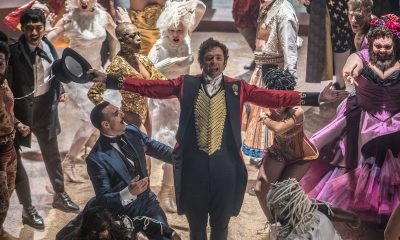Arts & Entertainment
Area museums offer wide-ranging exhibits
Hot summer days are a great time to stay cool indoors while learning about a range of topics


One of the photos in the ‘SHARKS: On Assignment with Brian Skerry.’ (Photo by Brian Skerry; courtesy National Geographic)
Hot summer days are a great time to stay cool indoors while learning about a range of topics including science, art and history. Whether it’s with kids, friends, a significant other or even a solo trip there are plenty of museum options to take advantage of in the city.
Renwick Gallery is offering “Parallax Gap,” designed by architectural design practice FreelandBuck through Feb. 11, 2018. The piece will be suspended from the ceiling and surround the length of the Renwick. The installation combines both Eastern and Western perspectives in nine depictions of famous American buildings. For more details, visit amercianart.si.edu/exhibitions.
National Building Museum (401 F St., N.W.) hosts Hive, a large-scale model built from 2,700 wound paper tubes, from July 4-Sept. 4. The installation is 60 feet tall with a reflective silver exterior and magenta interior. Other Hive summer programming include behind-the-scenes construction tours and an after-hours program for teens on Aug. 10. Tickets are $16 for adults, $14 for students and seniors and $5 for Blue Star children ages 3 and up.The museum will also host Hill Country Backyard Barbecue on the West Lawn on Thursdays and Fridays from 4-9 p.m. and Saturdays and Sundays from 11 a.m.-9 p.m.For more information, visit nbm.org/exhibition/hive.
Foundry Gallery (2118 8th St., N.W.) presents, “A Mathematically Transformed World,” an exhibit by artist Allen Hirsh, through July 30. Hirsh distorted images, ranging from abstract landscapes to President Donald Trump, using mathematical programs he designed himself. Admission is free. Visit foundrygallery.org for more details.
“Connecting the Dots” by Claudia Samper, an exhibit consisting of drawings, paintings and transparencies, is on display at Touchstone Gallery (901 New York Ave., N.W.) from July 5-30. Samper’s work uses avian imagery to examine human communication. Touchstone Gallery will also present its Touchstone Gallery Member Show and work from youth and adults from New Community ArtSpace. Free admission. For more information, visit touchstonegallery.com.
The National Museum of Natural History (10th St. and Constitution Ave., N.W.) opens “Narwhal: Revealing an Arctic Legend” on Aug. 3 through 2019. The exhibit will explore the connection between narwhals and the Inuit. Guests can see real narwhal tusks and skulls, Inuit artwork and cultural artifact. An 18-foot, life-sized model of a narwhal will be suspended above the first floor. For more information, visit naturalhistory.si.edu/exhibits/narwhal.
The National Museum of American History (14th St. and Constitution Ave., N.W.) presents “JFK Centennial Celebration,” a commemoration of John F. Kennedy’s 100th birthday anniversary, through Aug. 27. The showcase will display nine photographs of Kennedy and his family taken in 1961. It will be included as part of the American Presidency exhibit. Visit americanhistory.si.edu/exhibitions for more details.
Artechouse D.C. (1238 Maryland Ave., S.W.) presents “XYZT: Abstract Landscapes,” an interactive, sensory experience, through Sept. 3. Visitors can experience walking on grass or touching sand using modern technology to create a realistic, virtual reality. Guests can view the exhibit during daytime hours from 10 a.m.-4 p.m. or evening hours from 5:30-10 p.m. Guests six and up are invited to the daytime showing. Visitors must be 21 and over for evening hours. General admission tickets are $15. Tickets for children, students and seniors is $10. For more information, visit artechouse.com.
U.S. Botanical Garden Conservatory (100 Maryland Ave., S.W.) hosts You Can Grow It through Oct. 15. Visitors can explore the outdoor and indoor gardens while learning the basics of growing plants and how to solve plant problems. The exhibit is recommended for both advanced and beginner gardeners. For more details, visit usbg.gov/youcangrowit.
National Geographic Museum (1145 17th St., N.W.) presents “SHARKS: On Assignment with Brian Skerry” through Oct. 15. Skerry is an Award-winning National Geographic photographer who documented sharks using photography. His work highlights the importance of sharks in the ecosystem and explores why they should be protected and appreciated. The exhibit also includes models, large-scale images, videos, artifacts, and interactive experiences. Skerry’s new National Geographic book “SHARK” is an accompanied piece to the exhibit. Regular tickets are $15. Member, student, military and senior tickets are $12. Children tickets are $10. Tickets also give entry into “National Geographic Presents: Earth Explorers,” an interactive exhibit that lets visitors emulate National Geographic explorers in the field. For more information, visit nationalgeographic.org/dc/exhibitions/sharks.
“Drawing Justice: the Art of Courtroom Illustration” is at the Library of Congress (101 Independence Ave., S.E.) through Oct. 28. Original art depicting courtroom dynamics from cases in the last 50 years are on display in the Thomas Jefferson Building. For more details, visit loc.gov/exhibitions.
a&e features
Local, last-minute holiday gift ideas
Celebrate the season while supporting area businesses

The DowntownDC Holiday Market is bustling. Union Station is decked out with its annual Christmas tree. Washingtonians have wrapped their houses and apartment balconies with festive lights and holiday decorations. The holiday season is here. And with stockings to fill and empty space under the tree, Washington’s local shops and artists have plenty to offer.
Show your LGBTQ and D.C. pride with the Washington Blade’s annual holiday gift guide.
To embrace the holiday buzz: The Blanco Nwèl cocktail from Alchy Cocktails. This Caribbean eggnog is one of Alchy Cocktail’s seasonal holiday cocktails. The flavor profile is similar to coquito, a traditional Puerto Rican Christmas drink with a coconut base. As a queer and Caribbean-owned business, Alchy Cocktails has been based out of Washington since 2021. Blanco Nwèl is available in both cocktail ($24) and mocktail ($12) online and at a variety of holiday markets, including the Tingey Plaza Holiday Market, the Flea Market at Eastern Market, Union Station’s Main Hall Holiday Market, and more. ($24)

A spicy bite: Gordy’s Cajun Okra from Salt and Sundry. These spicy, tangy pickles pull on Southern Cajun-style flavors, packing a punch with paprika, cayenne, and more. Gordy’s is an LGBTQ-owned and Washington-based brand, making this gift an opportunity to support a local LGBTQ business straight from the jar. This pantry staple is available on Salt & Sundry’s website and at its locations in Union Market, Logan Circle, and its Georgetown holiday pop-up store. ($14)


To celebrate Washington pride: The DC Landmark Tote Bag from The Neighborgoods. Native Washingtonians, visitors, friends and family alike will find something to love about this Washington-themed tote bag. Food trucks, the 9:30 Club, the Metro logo and pandas from the National Zoo are just some of the city’s landmarks depicted across the tote in a red, white, and blue color palette. The tote is a part of the DC Landmarks collection, which donates 10 percent of its sales to the American Civil Liberties Union. The Neighborgoods itself is a local, woman-owned business built out of a passion for screen-printing in 2013. The 100 percent cotton canvas tote is for sale online or at the DowntownDC Holiday Market. ($22)
To give friends and family their flowers: The Flowers Bandana from All Very Goods. This 100 percent cotton bandana was designed in Washington and hand printed in India. Its uniqueness comes in being covered with the faces of Black women, representing a “love letter to all women but especially Black women,” according to All Very Goods. The Black woman-owned and operated business, based out of Northwest Washington, has a mission to celebrate diversity and representation through its products. The bandana intends to give Black women their “flowers.” The Flowers bandana is available for purchase online. ($24)

To unlock culinary creativity: The Curious Chef Gift Collection from Each Peach Market. This customizable collection of kitchen oddities — ranging from tinned fish to chili oil — is a quirky gift for the most inventive chefs. The collection is available in a Standard Santa, Extra Goodies and Super Holiday Size for up to $165. The Washington-based market, founded in 2013, permits customers to make the collection special by specifying what unique ingredients are packaged, including products made by local or LGBTQ brands. Each Peach Market offers assembly and pick up in-person at its Mount Pleasant shop and also offers local delivery and nationwide shipping via its website. ($85)

To give a touch of sweetness: The DC Landmark Chocolate Covered Oreo Holiday Cookies from Capital Candy Jar. Wrapped in a festive red bow, this box of nine cookies embraces love for Washington and the holiday season in one. Among the dark and milk chocolate covered cookies are images of the U.S. Capitol, the White House, the Lincoln Memorial, the Jefferson Memorial and festive hollies. The treat, packaged in a Hill East facility just a few blocks from the Capitol, is available for purchase online and at the DowntownDC Holiday Market. ($23.95)


To celebrate queer gaming: Thirsty Sword Lesbians from Labyrinth Games & Puzzles. This roleplaying game embraces lesbian culture by unlocking a world of swords, romance, and battle. Ideal for group settings, the book presents a system of world building and character identities that are best brought to life by creative minds. Labyrinth, which has been a local Washington business for more than 15 years, celebrates non-digital fun through games and puzzles that connect the community. This gift is offered online and at Labyrinth’s Capitol Hill location. ($29.99)
To make a bold statement: The “Resist” T-shirt from Propper Topper. This locally screen-printed black tee features the Washington flag designed within a raised fist, symbolizing both Washington pride, and political resistance. The shirt is made exclusively by Propper Topper, a local Washington business that evolved from a hat shop to a gift store since opening in 1990. The tri-blend unisex shirt is available both for pickup at Propper Topper’s Cathedral Heights location and shipping via the online site. ($32)

To keep it c(g)lassy: The Glass Ball earrings from Blue Moon Aquarius. Gifting can rarely go wrong when it comes to a new pair of earrings. The unique statement earrings — made of polymer clay, glass, and 18k gold plating over surgical steel — are hand cut, sanded and assembled in Washington, meaning each set is unique. Blue Moon Aquarius, a local brand, is known for its small batch jewelry and home decor designed with clay materials. Available in oxblood, hunter green, lavender, and bluestone color palettes, these earrings are available for purchase on Blue Moon Aquarius’ website and at the DowntownDC Holiday Market. ($48)

To elevate a holiday tea or charcuterie party: The Honey Flight: Tea Lover’s Selection from BannerBee. This local honey company presents the ideal gift to make cozying up with a cup of tea slightly more special. The Honey Flight contains three types of raw wildflower honey infused with fair trade Ugandan vanilla bean, chai spices, and locally sourced lemon thyme herb. The gift is also an opportunity to uplift a family company based in the Mid-Atlantic that offers all-natural, sustainable products. The flight is available online, at the DowntownDC Holiday Market or at the Arlington Courthouse and Dupont Farmers’ Markets. ($36)

For Baltimore shoppers: If you’re in Charm City, don’t miss Balston Mercantile, opened by a gay couple in June. Their gorgeous shop in the Hampden neighborhood offers an array of unique, upscale finds, from barware and artwork to cookbooks and home decor and more. (849 W. 36th St.)
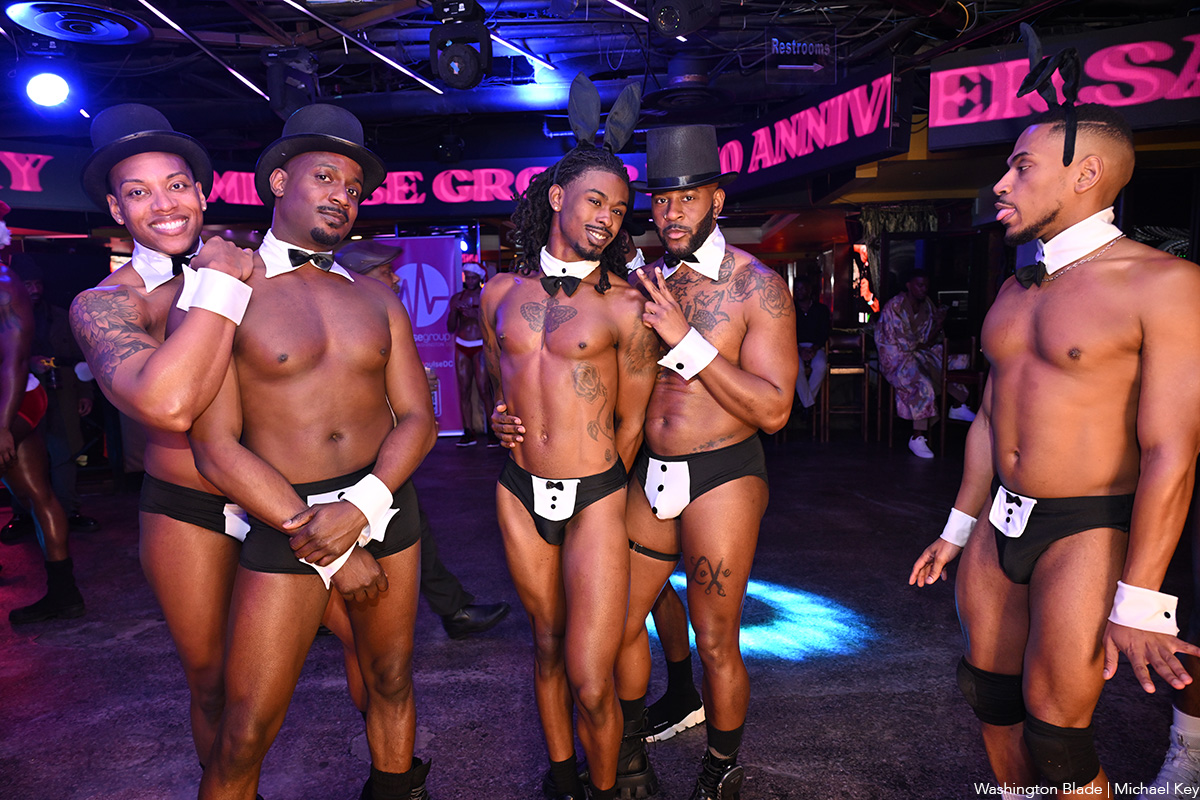
Impulse Group DC held “10’s Across the Board: A Celebration of 10 Years” at Bravo Bravo (1001 Connecticut Ave., N.W.) on Sunday, Dec. 14. Impulse Group DC is a volunteer-led 501(c)(3) and affinity group of AIDS Healthcare Foundation dedicated “to engaging, supporting, and connecting gay men” through culturally relevant health and advocacy work.
(Washington Blade photos by Michael Key)
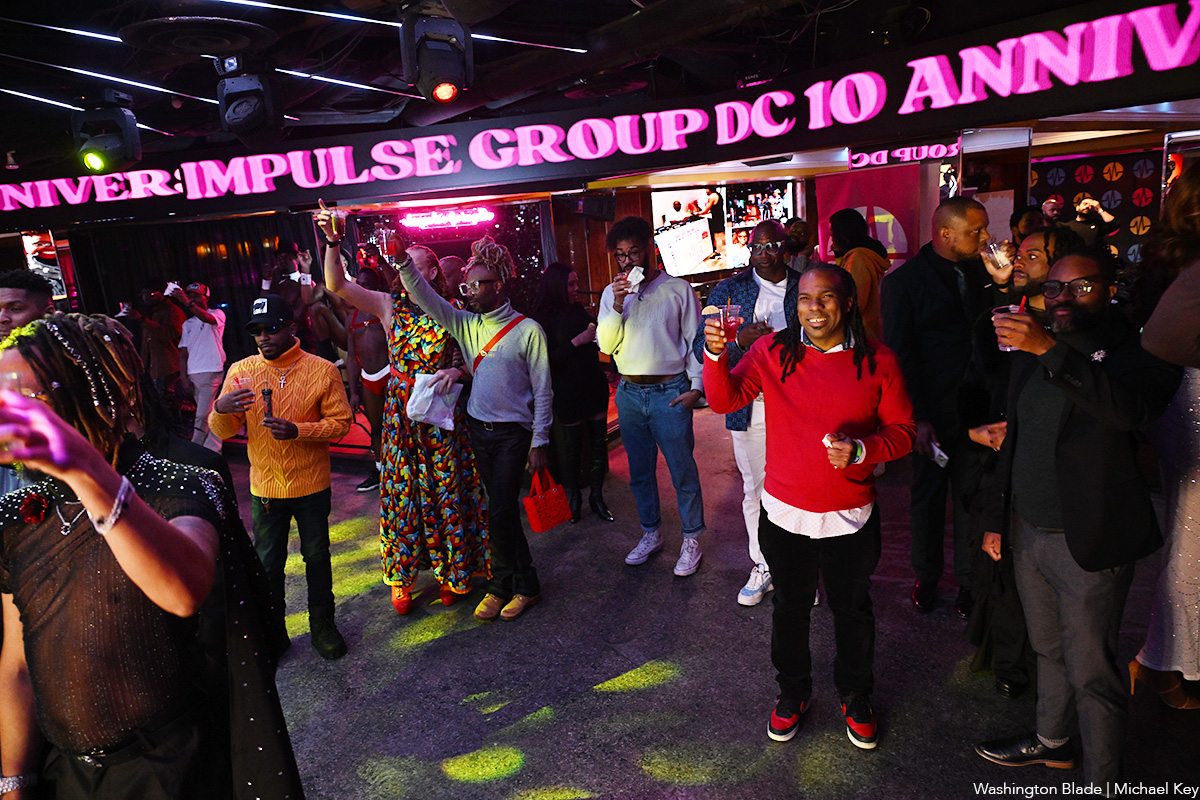




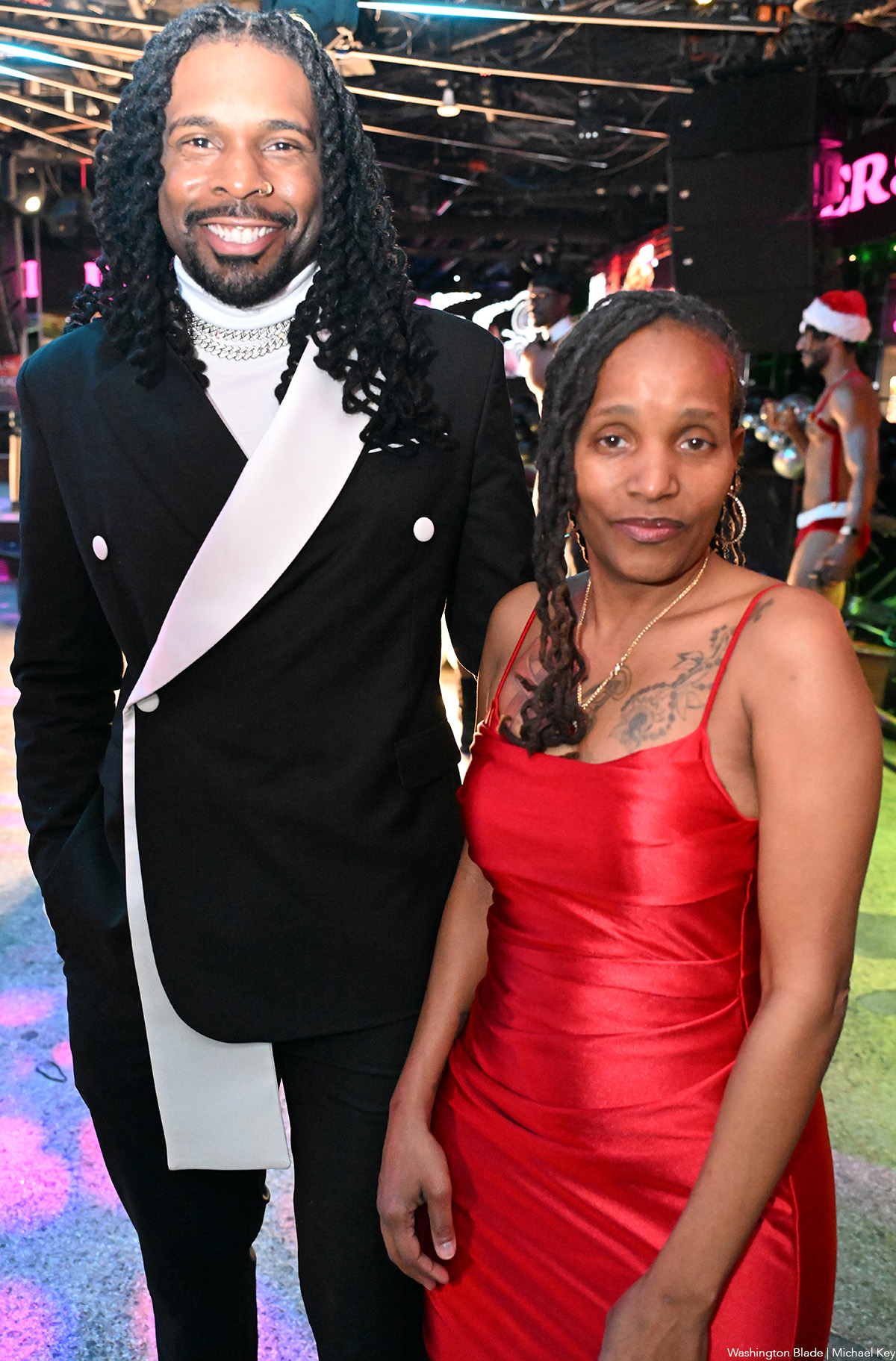
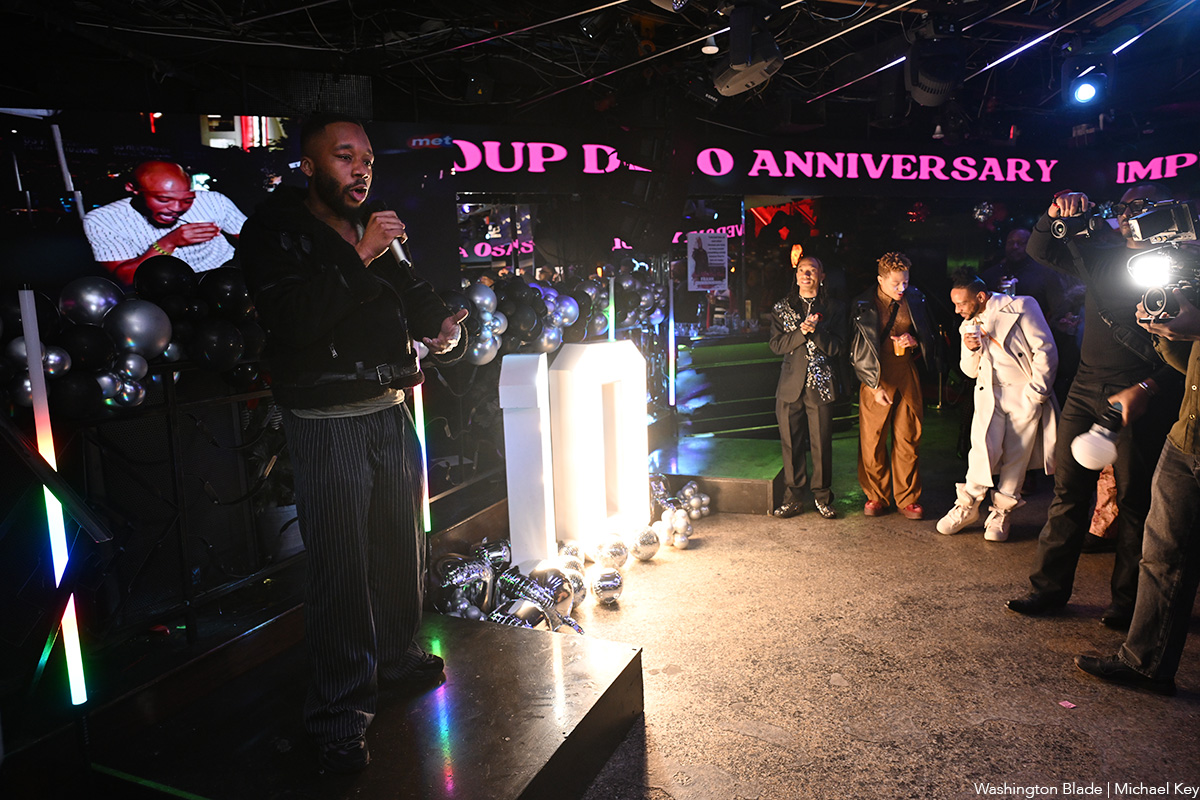

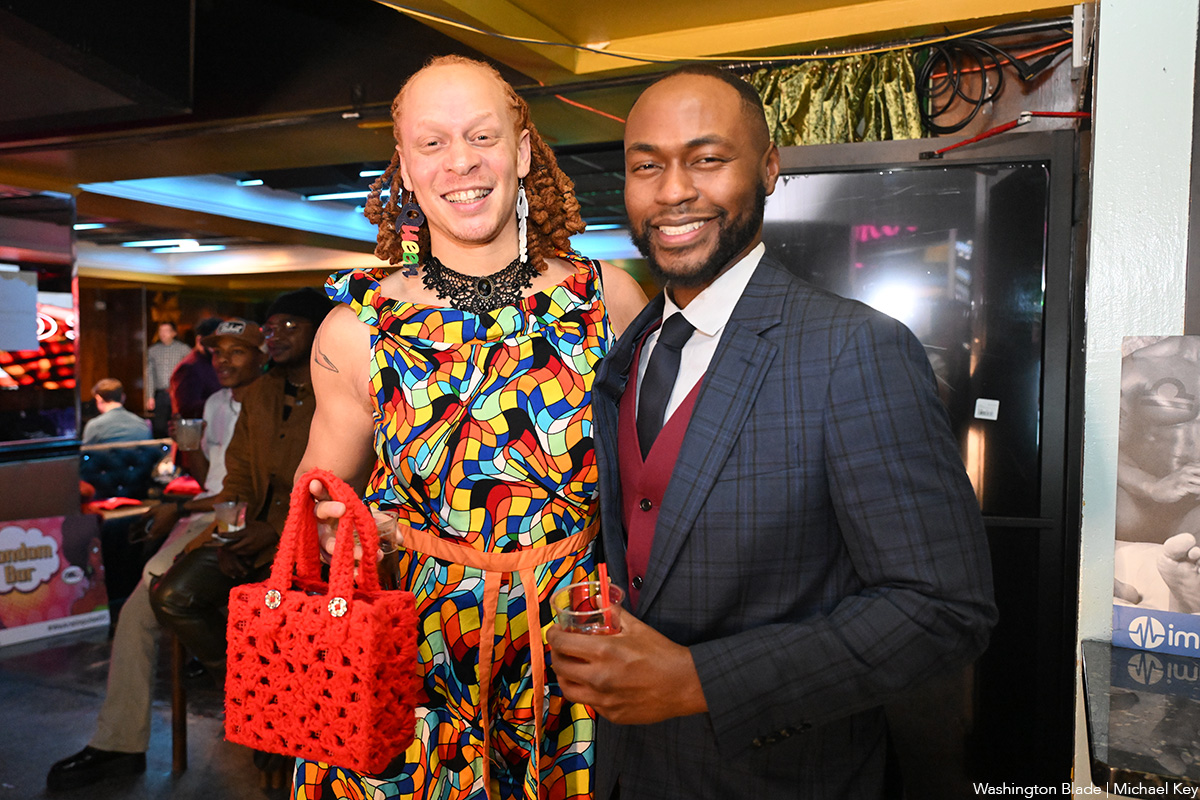
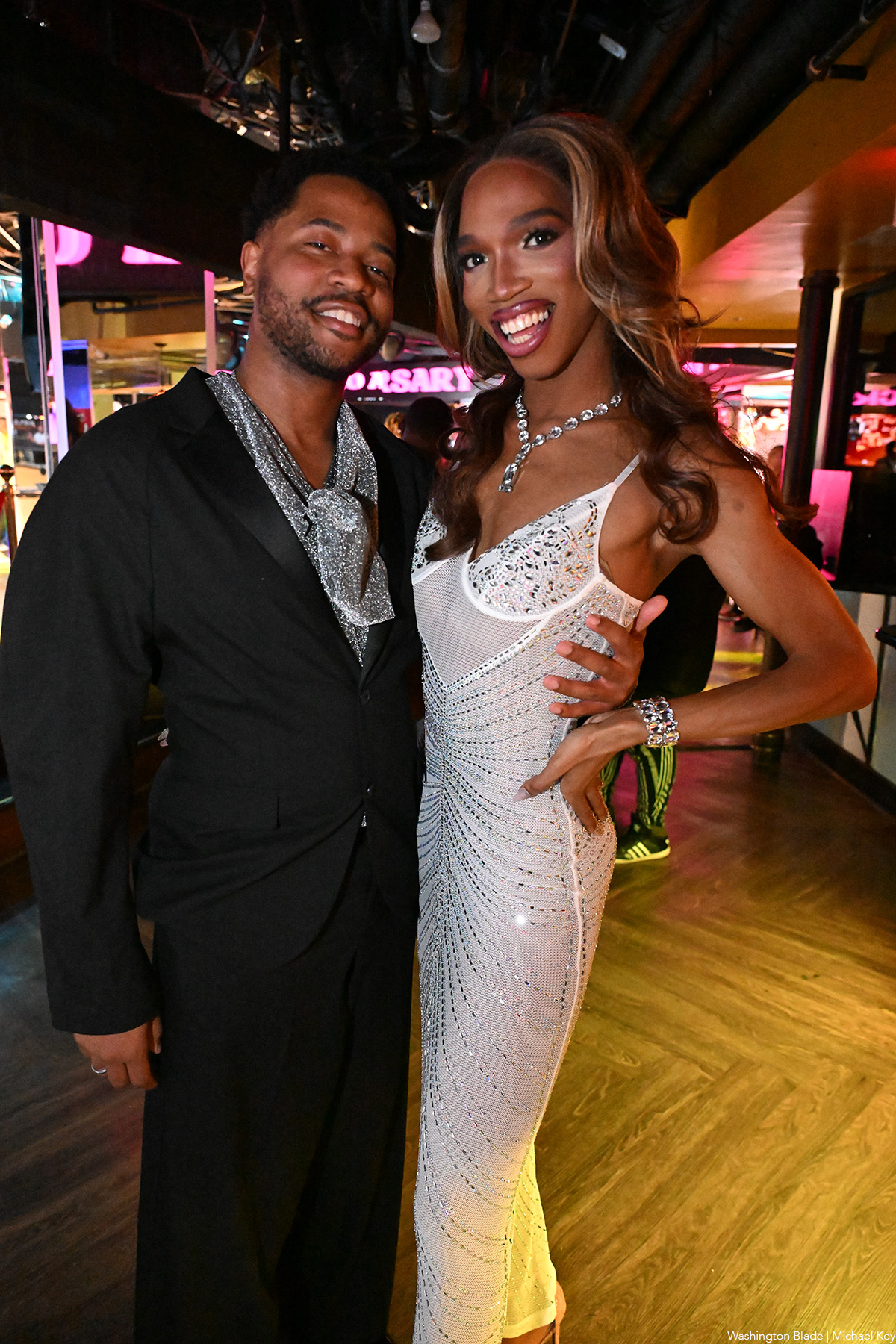
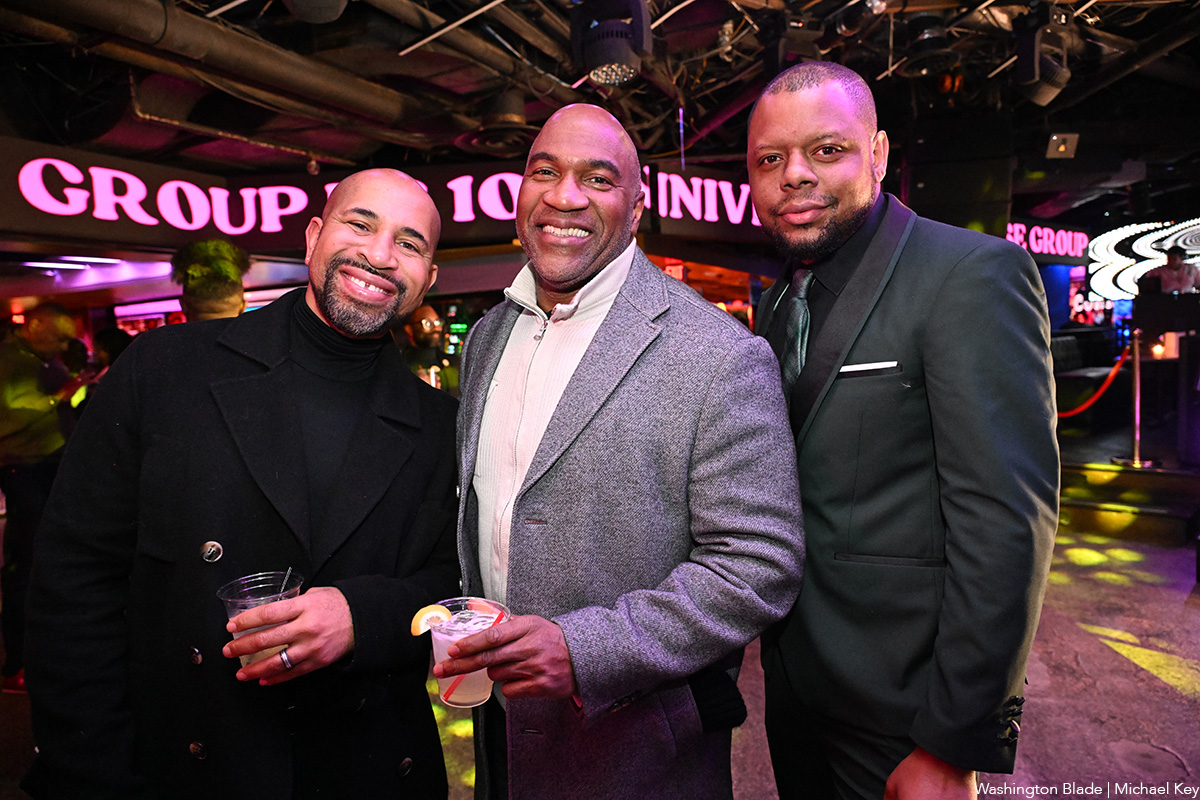

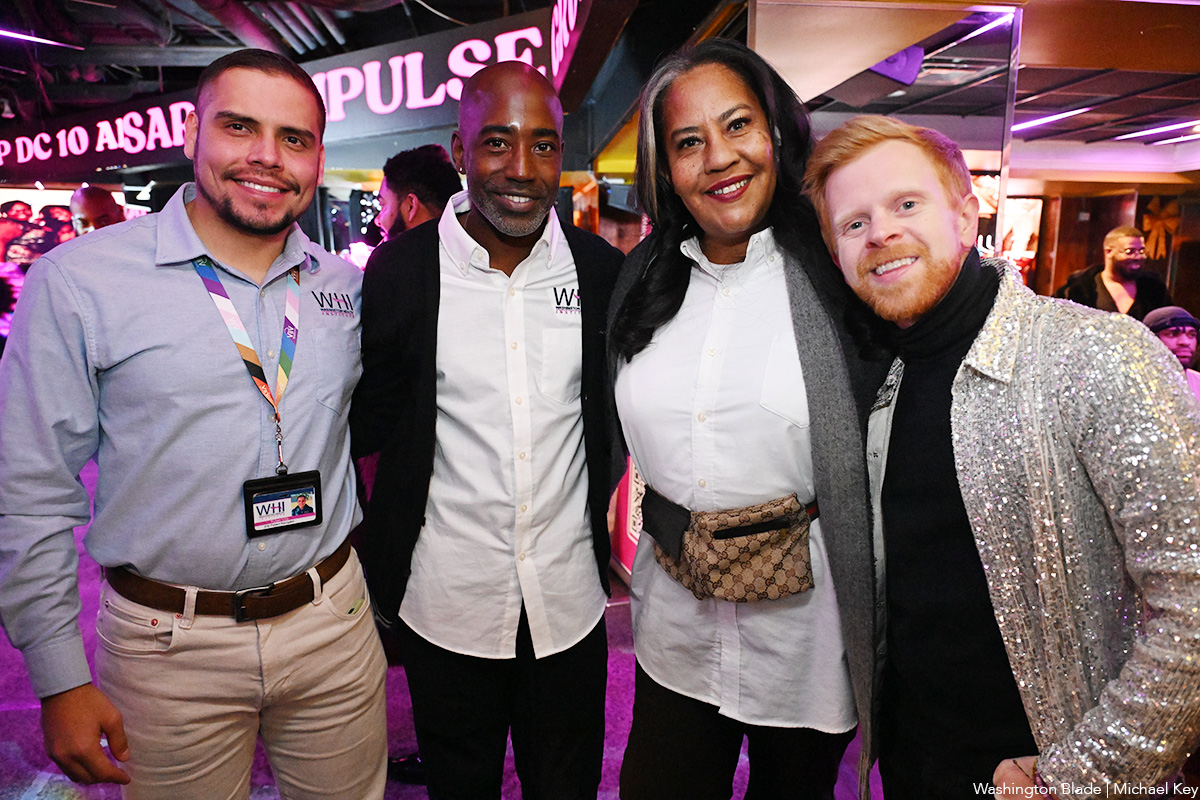

Rob Reiner, most known for directing untouchable classics like “The Princess Bride,” “Misery,” “When Harry Met Sally…,” and “Stand by Me,” died Dec. 14 alongside his wife, Michele Singer Reiner, in their Los Angeles residence. While investigations are actively underway, sources have told PEOPLE Magazine that the pair’s son, Nick Reiner, killed his parents and has been taken into custody.
Reiner was a master of every genre, from the romantic comedy to the psychological thriller to the coming-of-age buddy movie. But in addition to his renowned work that made him a household name, Reiner is also remembered as a true advocate for the LGBTQ community. In 2009, Reiner and his wife co-founded the American Foundation for Equal Rights, helping fight against California’s Prop 8 same-sex marriage ban. They were honored at the 2015 Human Rights Campaign Las Vegas Gala.
In a statement, HRC President Kelley Robinson said: “The entire HRC family is devastated by the loss of Rob and Michele Reiner. Rob is nothing short of a legend — his television shows and films are a part of our American history and will continue to bring joy to millions of people across the world. Yet for all his accomplishments in Hollywood, Rob and Michele will most be remembered for their gigantic hearts, and their fierce support for the causes they believed in — including LGBTQ+ equality. So many in our movement remember how Rob and Michele organized their peers, brought strategists and lawyers together, and helped power landmark Supreme Court decisions that made marriage equality the law of the land — and they remained committed to the cause until their final days. The world is a darker place this morning without Rob and Michele — may they rest in power.”
Reiner’s frequent collaborators have also spoken out as the industry is in mourning, including figures like Ron Howard and John Cusack.
A joint statement from Jamie Lee Curtis and Christopher Guest (who starred in Reiner’s “This is Spinal Tap”) reads: “Christopher and I are numb and sad and shocked about the violent, tragic deaths of our dear friends Rob and Michele Singer Reiner and our ONLY focus and care right now is for their children and immediate families and we will offer all support possible to help them. There will be plenty of time later to discuss the creative lives we shared and the great political and social impact they both had on the entertainment industry, early childhood development, the fight for gay marriage, and their global care for a world in crisis. We have lost great friends. Please give us time to grieve.”
While attending the 2019 HRC Los Angeles Dinner, Reiner spoke out about the need for equality: “We have to move past singling out transgender, LGBTQ, black, white, Jewish, Muslim, Latino. We have to get way past that and start accepting the idea that we’re all human beings. We’re all human beings, we all share the same planet, and we should all have the same rights, period. It’s no more complicated than that.”
-

 Politics2 days ago
Politics2 days agoLGBTQ Democrats say they’re ready to fight to win in 2026
-

 District of Columbia2 days ago
District of Columbia2 days agoBrian Footer suspends campaign for Ward 1 D.C. Council seat
-

 Chile4 days ago
Chile4 days agoFar-right José Antonio Kast elected Chile’s next president
-

 Opinions2 days ago
Opinions2 days agoLighting candles in a time of exhaustion



